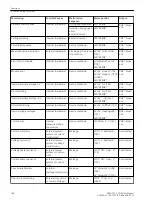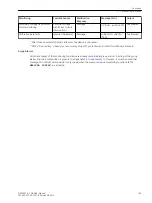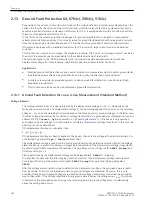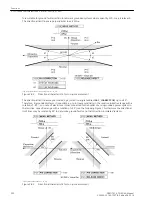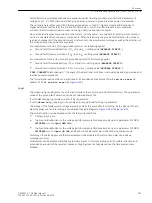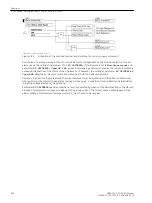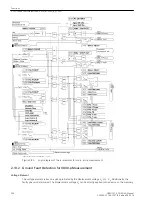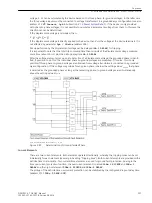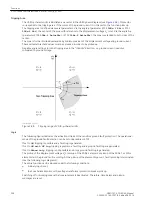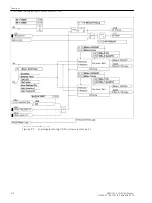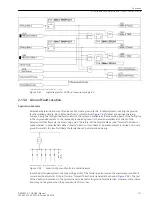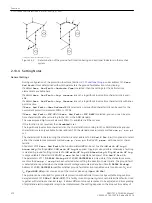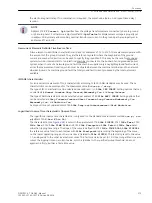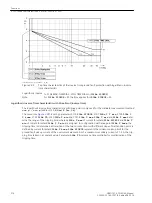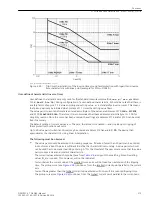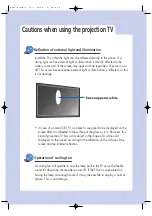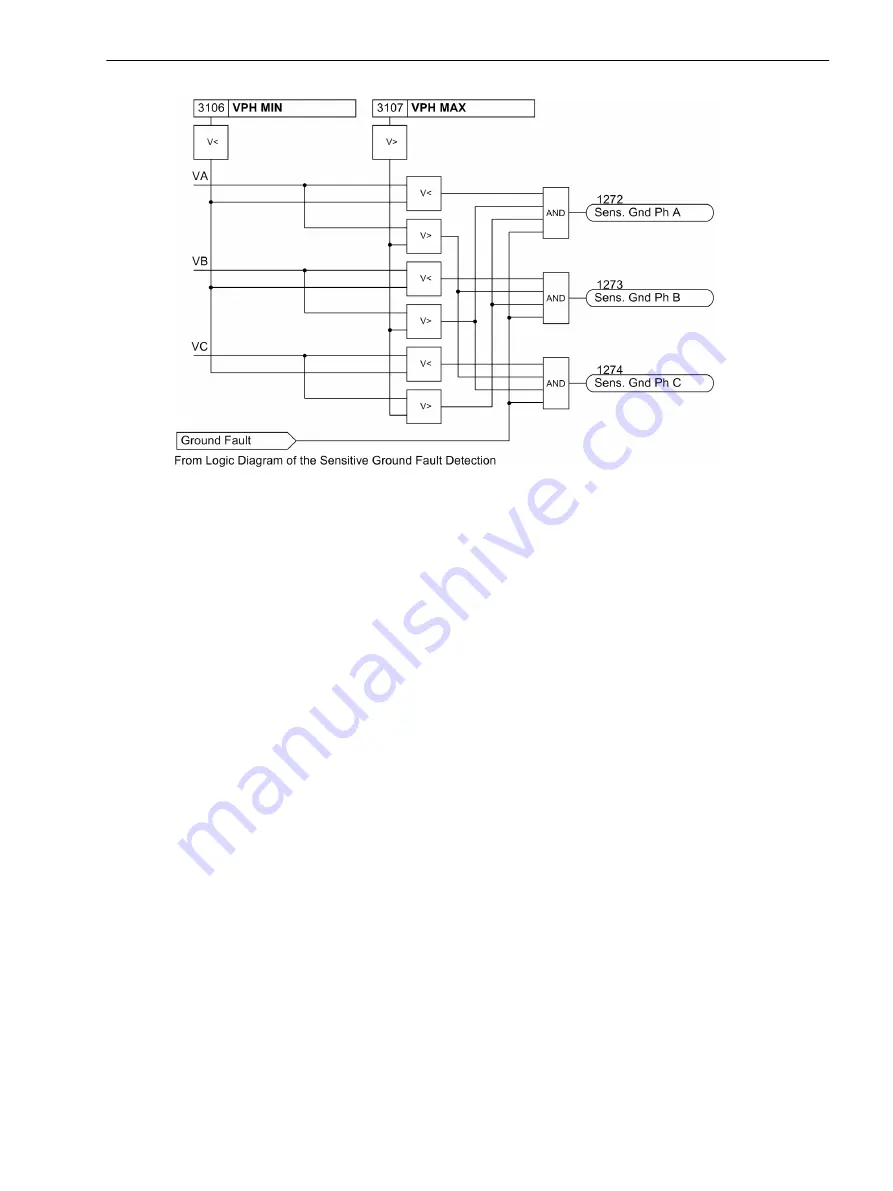
[7sj6x_erdschlussbehaftete_phase-150502-kn, 1, en_US]
Figure 2-81
Determination of Grounded Phase
Current Elements
The current elements for ground faults operate with the magnitudes of the ground current. It is sensible to
employ them only where the magnitude of the ground current can be used to specify the ground fault. This
may be the case on grounded systems (solid or low-resistance) or on electrical machines which are directly
connected to the busbar of an isolated power system, when in case of a network ground fault the machine
supplies only a negligible ground fault current across the measurement location, which must be situated
between the machine terminals and the network, whereas in case of a machine ground fault the higher
ground fault current produced by the total network is available. Ground current protection is mostly used as
backup protection for high resistance ground faults in solid or low resistance grounded systems when the
main fault protection does not pickup.
For ground fault protection, two-step current/time characteristic can be set. Analog to the overcurrent protec-
tion, the high-set current element is designated as
50Ns-2 PICKUP
and
50Ns-2 DELAY
and is provided
with a definite time characteristic. The overcurrent element
50Ns-1 PICKUP
works with definite time delay
(
50Ns-1 PICKUP
and
50Ns-1 DELAY
). The
51Ns PICKUP
element may be operated with either a user-
defined characteristic (
51Ns PICKUP
and
51NsTIME DIAL
) or an inverse-time characteristic according to
IEC or ANSI standards. Additionally, a current element with logarithmic inverse characteristic or logarithmic
inverse characteristic with knee point is implemented. The characteristics of these current elements can be
configured. Each of these elements may be directional or non-directional.
The pickup of the definite time overcurrent protection can be stabilized by the configured dropout delay time
(address 3121
50Ns T DROP-OUT
).
The dropout delay only works if the current stage is operated independently of the voltage stage. Parameter
3130
PU CRITERIA
is set to
Vgnd OR INs
.
Determination of Direction
When determining the sensitive ground fault direction it is not the current value that is crucial, but the part of
the current which is perpendicular to a settable directional characteristic (axis of symmetry). As a prerequisite
for determining the direction, the displacement voltage V
0
must be exceeded as well as a configurable current
part influencing the direction (active or reactive component).
The following figure illustrates an example using a complex vector diagram in which the displacement voltage
V
0
is the reference magnitude of the real axis. The active part 3
Ι
0
real
of current 3
Ι
0 is calculated with reference
to the displacement voltage V
0
and compared with setting value
RELEASE DIRECT.
. The example is there-
Functions
2.13 Ground Fault Protection 64, 67N(s), 50N(s), 51N(s)
SIPROTEC 4, 7SJ62/64, Manual
201
C53000-G1140-C207-8, Edition 08.2016
Summary of Contents for SIPROTEC 4
Page 8: ...8 SIPROTEC 4 7SJ62 64 Manual C53000 G1140 C207 8 Edition 08 2016 ...
Page 18: ...18 SIPROTEC 4 7SJ62 64 Manual C53000 G1140 C207 8 Edition 08 2016 ...
Page 30: ...30 SIPROTEC 4 7SJ62 64 Manual C53000 G1140 C207 8 Edition 08 2016 ...
Page 540: ...540 SIPROTEC 4 7SJ62 64 Manual C53000 G1140 C207 8 Edition 08 2016 ...
Page 594: ...594 SIPROTEC 4 7SJ62 64 Manual C53000 G1140 C207 8 Edition 08 2016 ...
Page 720: ...720 SIPROTEC 4 7SJ62 64 Manual C53000 G1140 C207 8 Edition 08 2016 ...












